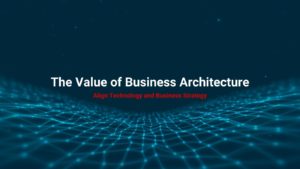The WHY change mandate is coming into focus for all large, legacy companies in most industries. These companies must use technology to transform into a more agile business. If they fail to do so, these companies will begin a slow decline and even run the risk of extinction.
Accept that Change is Beneficial and Inevitable.
Through continuous discoveries and innovation, mankind’s been able to completely transform and re-transform the meaning of what’s possible. From the discovery of fire and the invention of the wheel to the automobile and electricity, discoveries and technological innovations such as these have immensely improved the quality of life and standard of living. In the same vein, indoor plumbing and climate control has extended our life span, and commercial computers and smartphones have increased our knowledge and awareness of events on a global scale. Life as we know it will most certainly continue to evolve as we begin doing more with robotics, 3D printing and biomed devices.
What’s more stunning than what changes is how quickly game-changing innovations are happening. In the long-ago past, it could take centuries for the next big thing to come along. Then, as time progressed, new innovations came in time intervals like generations or decades. Now, life-altering innovations and discoveries are made in the span of a couple months. This unprecedented pace of change and adoption is rocking individuals, companies, cities and nations. In a matter of years, mobile phones became smartphones and are now ubiquitous with Facebook, Twitter, Google and digital cameras, which have all completely changed the way the social and business worlds operate. As we prepare for the next big wave of technological change with embedded internet (IOT), there’s only one thing we know to always be true. Technological innovation is going to keep happening, and it’s only going to keep accelerating.
Acknowledge the Struggles that Sometimes Come with Change.
Coping amid this frenzy of change is a daunting task for every individual. However, for the corporate CIO, the struggle is harnessing this energy and turning it into productivity and a competitive advantage. This brings about two big questions. The first being, “How do I enable the new technologies while continuously modernizing the legacy systems that still run the millions of transactions every day?” The second being, “How do I architect my way into a future where the new ideas can become real, impactful innovations that are implemented and integrated at speed and scale?”
Understand How New Technologies Transform the Marketplace of Every Industry.
This isn’t only about the technology. It’s also about what new technologies make possible. Competition and new business models are driving the change in every industry, whether at financial service firms, healthcare organizations, retailers or consumer goods. Innovative new companies are challenging the traditional business models, and unexpected new competitors are entering the market. All the while, technology-empowered consumers are changing the playing field as they demand what they want, when they want it and usually demanding lower and lower price points to boot.
This is what IT-enabled competition looks like, and for all those large, complex corporations saddled with legacy technologies, it isn’t pretty. New technologies are swirling around them. Business leaders who don’t really understand what’s possible – and how to distinguish between the truly impactful new technologies and those that are just bright, shiny objects – are wasting valuable time and money. Their organizations are effectively getting killed by newer, nimbler competitors.
Celebrate that IT has Evolved from Benchwarmer to MVP.
The discipline of IT has made a fast journey from back-office data processing to automating of front line processes to the lifeblood of all businesses. Now, winning in the 21st century will depend on an organization’s IT competency and the enablement, and even acceleration, of a dynamic business model based on a modern, agile IT platform. The new business model ideas and new technology capabilities can, and should, come from anywhere and everywhere – inside an organization and outside. IT has a critical role in helping those new ideas and technologies become a reality and make an impact at scale – and quickly.
New digital technology is at the heart of most of the newest waves of innovation, competition, customer centricity and industry disruption. Growth and prosperity depend upon an organization’s ability to ride those waves and for IT leaders to lead the way. So, the old and most common current ways of approaching, leading and investing in IT won’t work. Under the current role and rules of the game, we can’t work any harder, throw any more money at it, have a revolving door of CIOs and IT leaders or hope the pace of change somehow slows down. What we have to do is change our mindsets and reinvent our roles, as CIOs and IT leaders, from builders and controllers to enablers and integrators.
Getting IT right in this way is about thinking, investing and working differently to change the game. The winners will have the foresight to invest their time, energy and resources over a multi-year horizon to modernize their legacy systems and to get their IT capability properly architected for agility. This takes change. This takes visionary commitment and a new kind of IT leadership.
Author: Charlie Feld, Founder, The Feld Group Institute
Connect with Charlie Feld on LinkedIn ![]()
FURTHER LEARNING
While you’re visiting our site, we would like to encourage you to please take a moment to learn more about The Feld Group Institute and the programs we offer.




